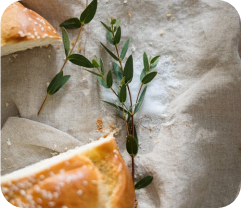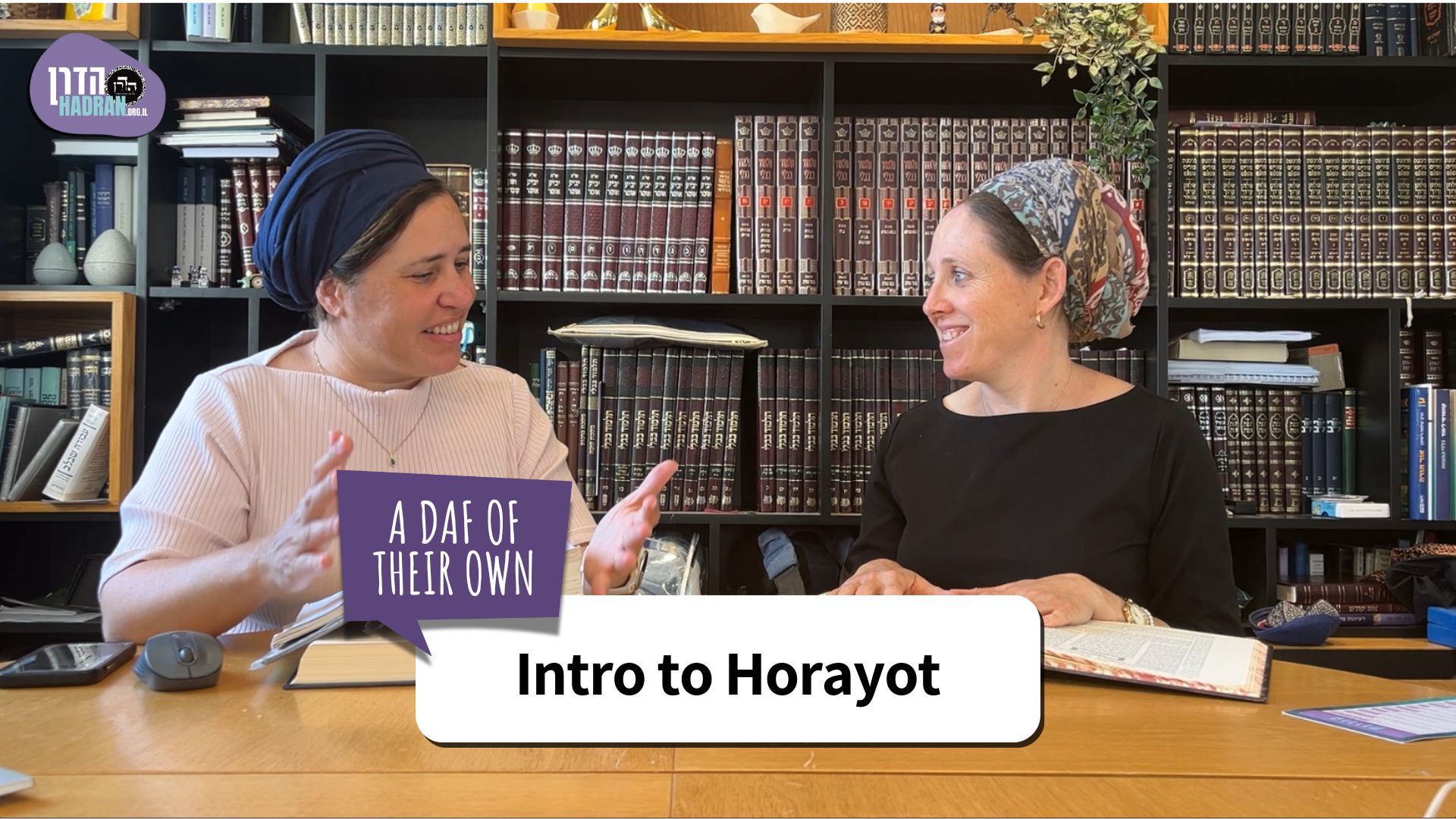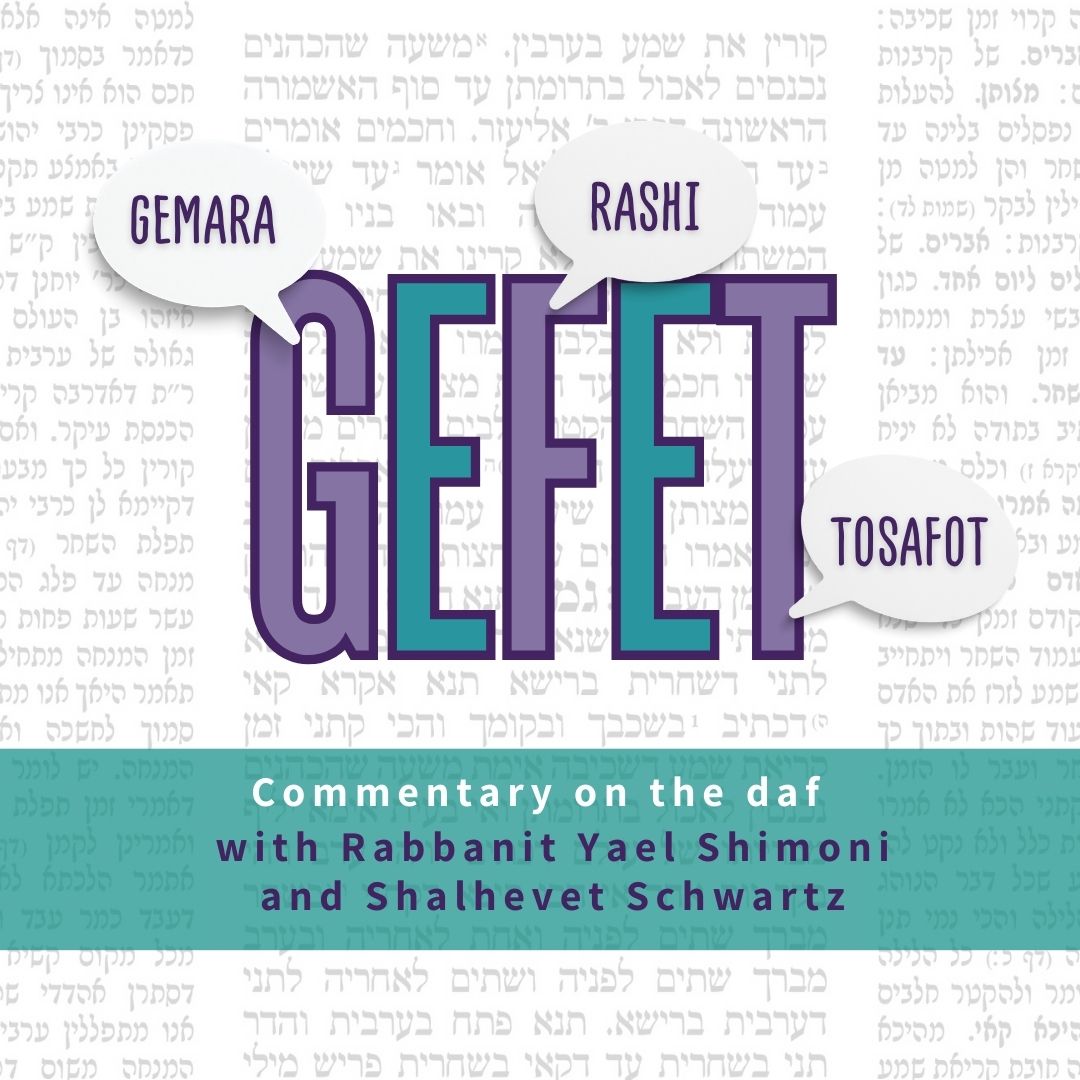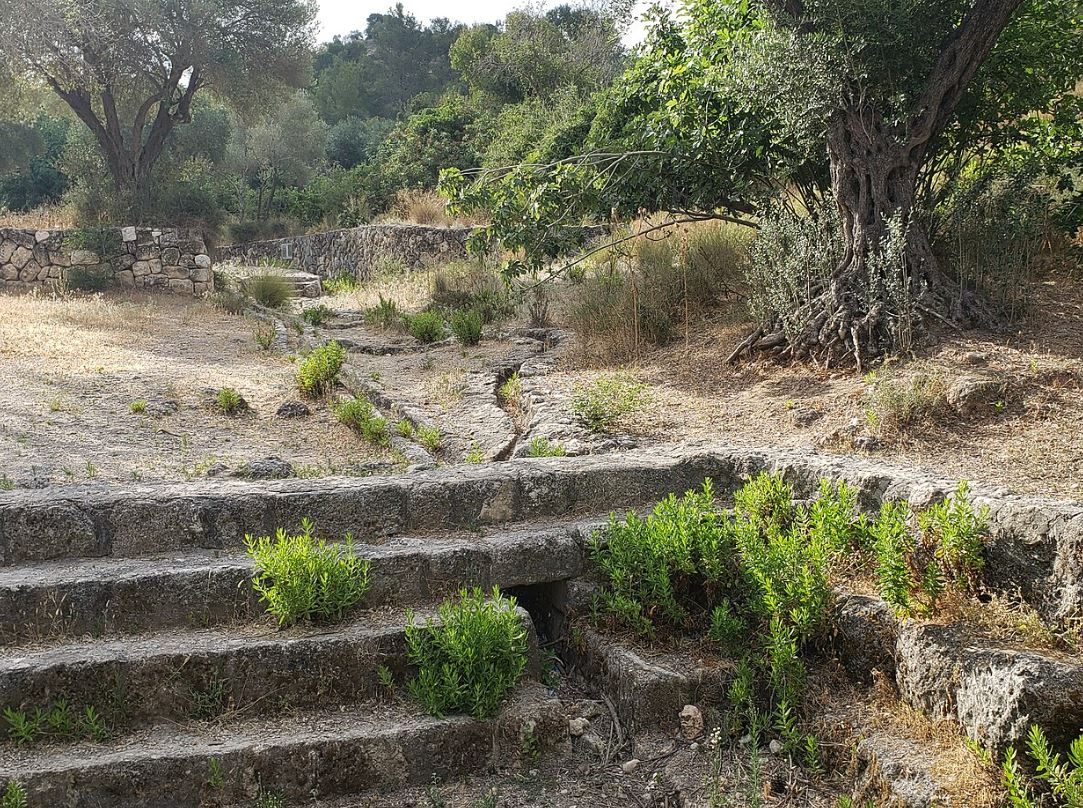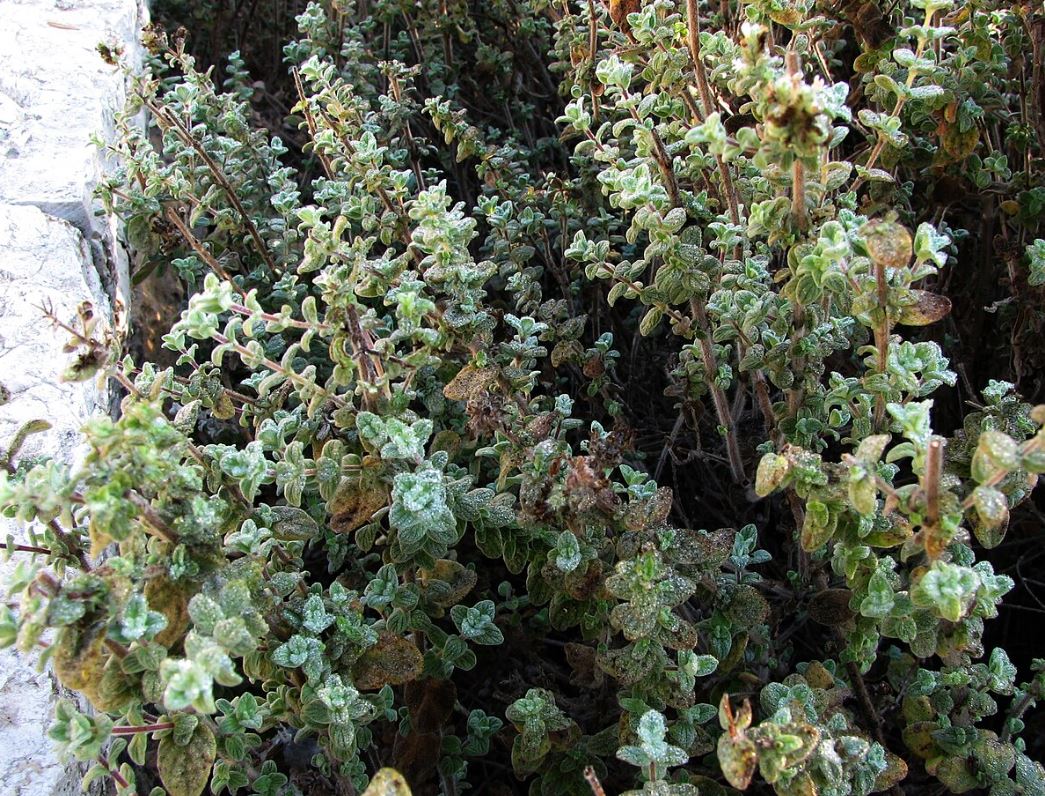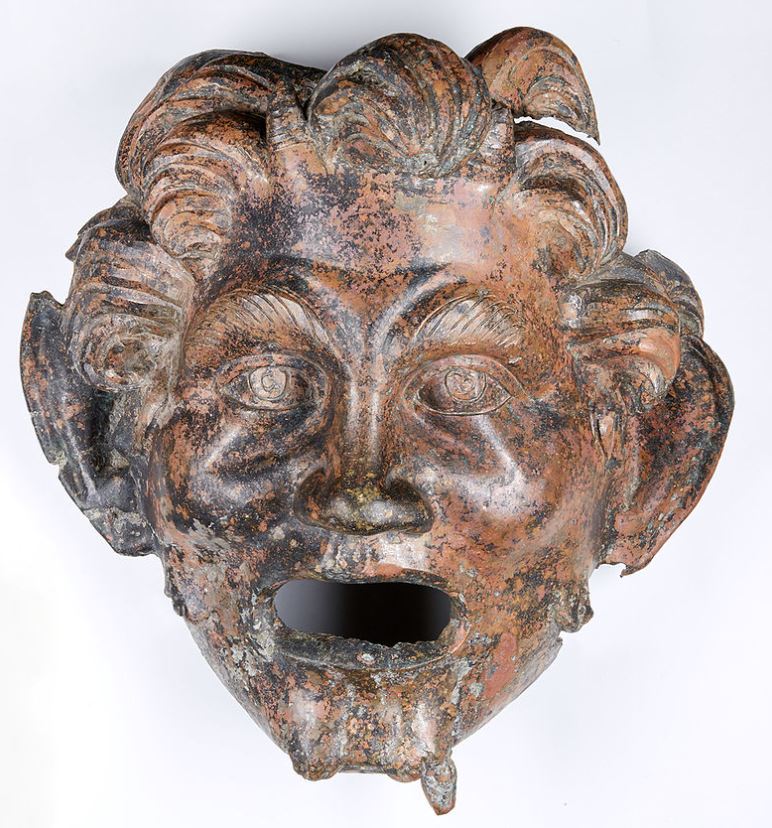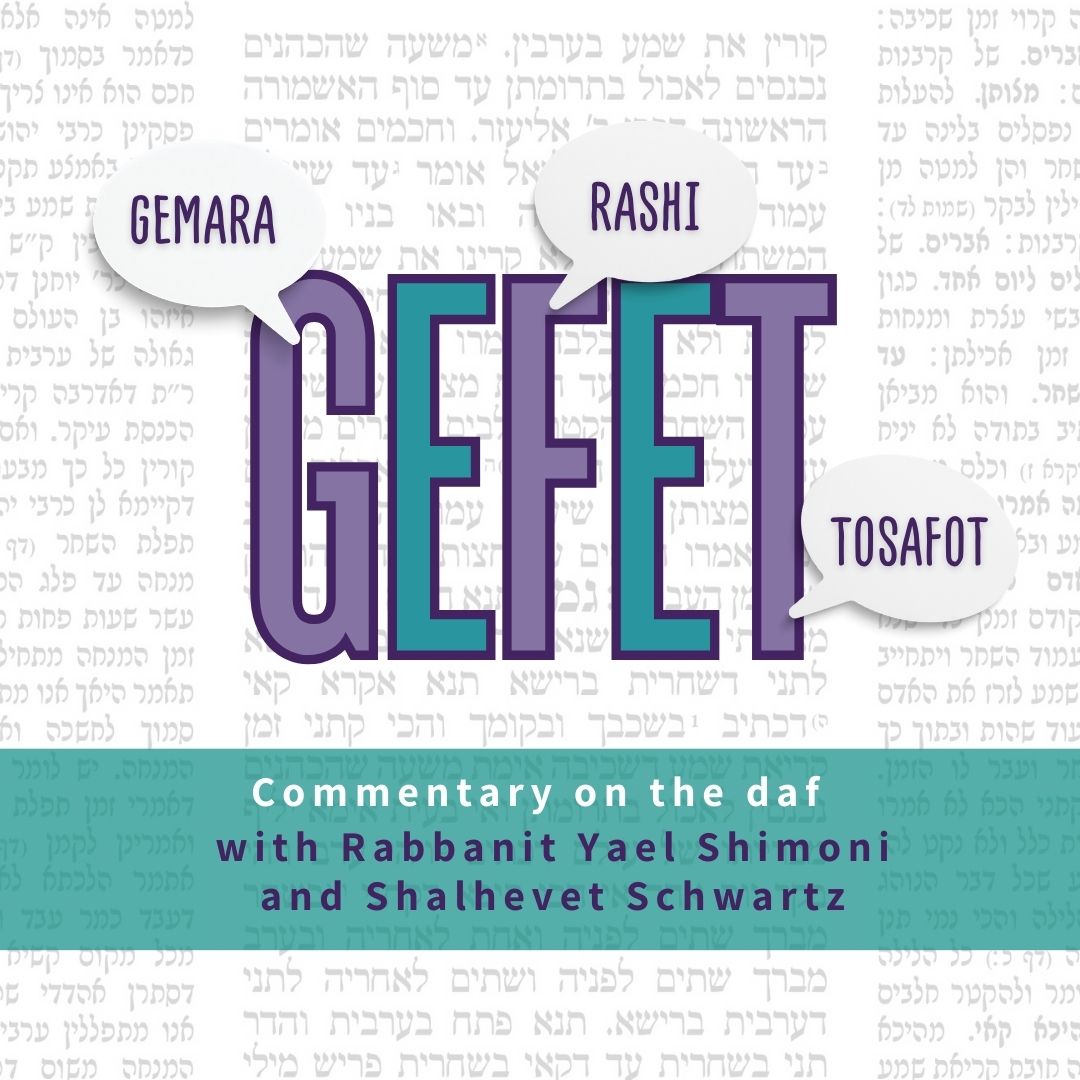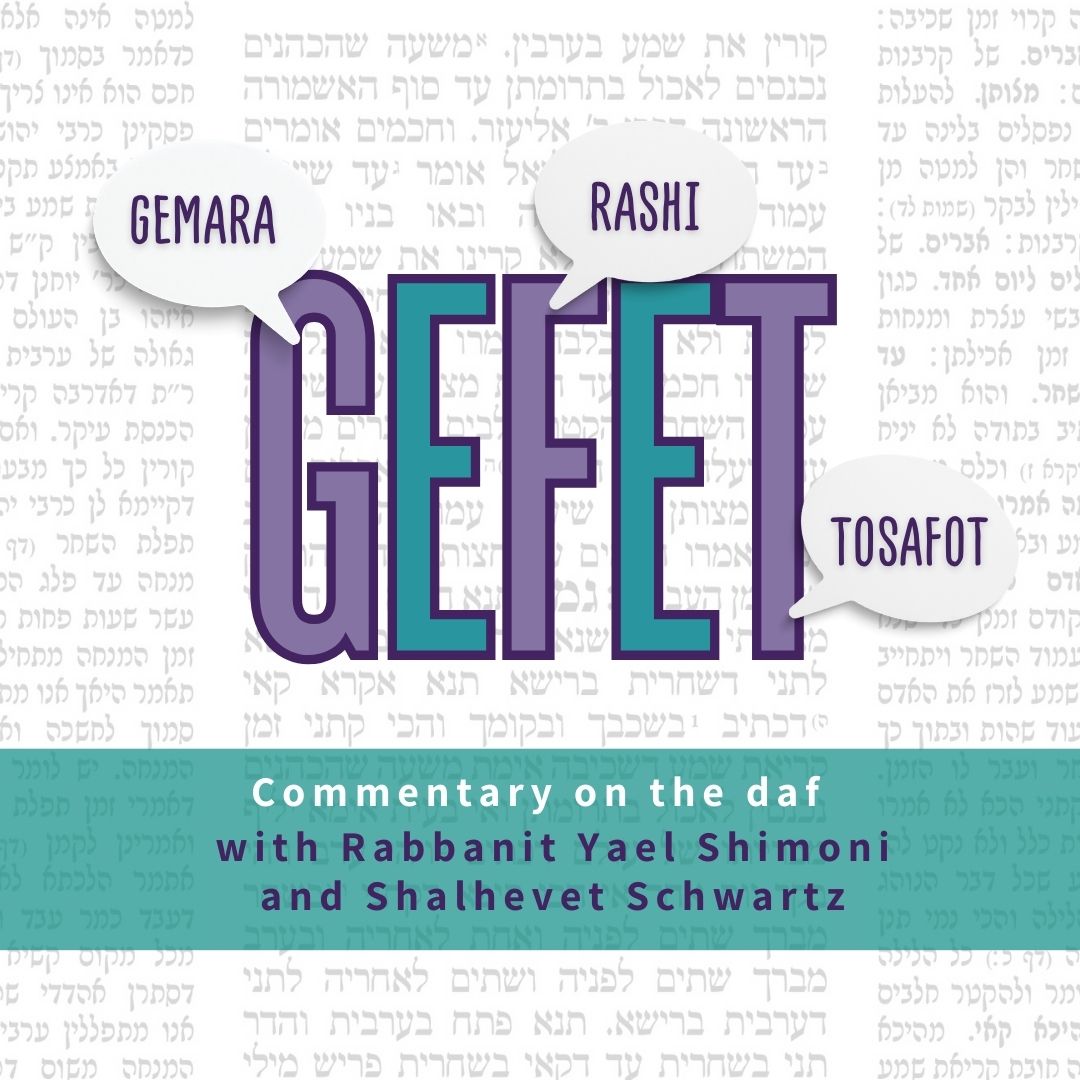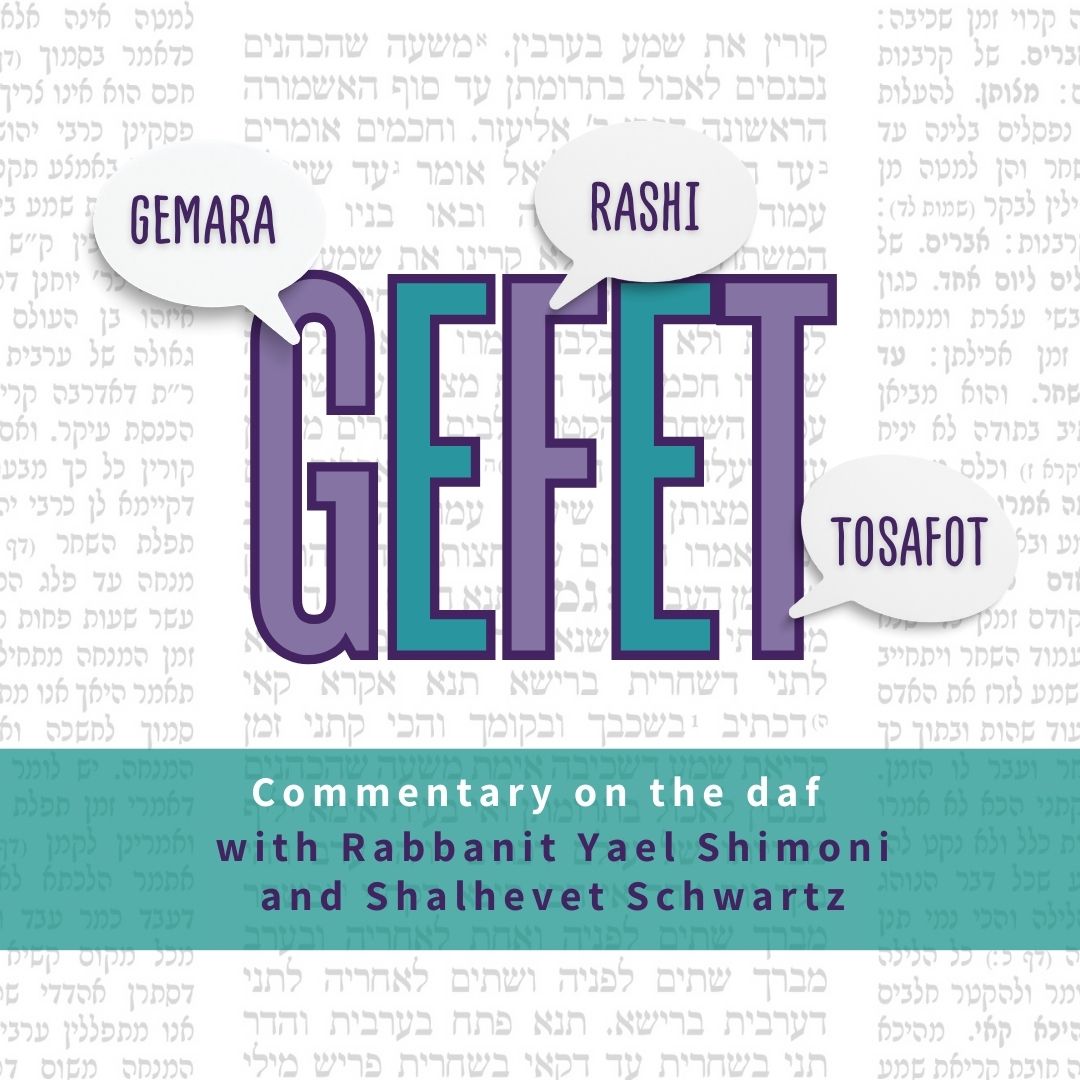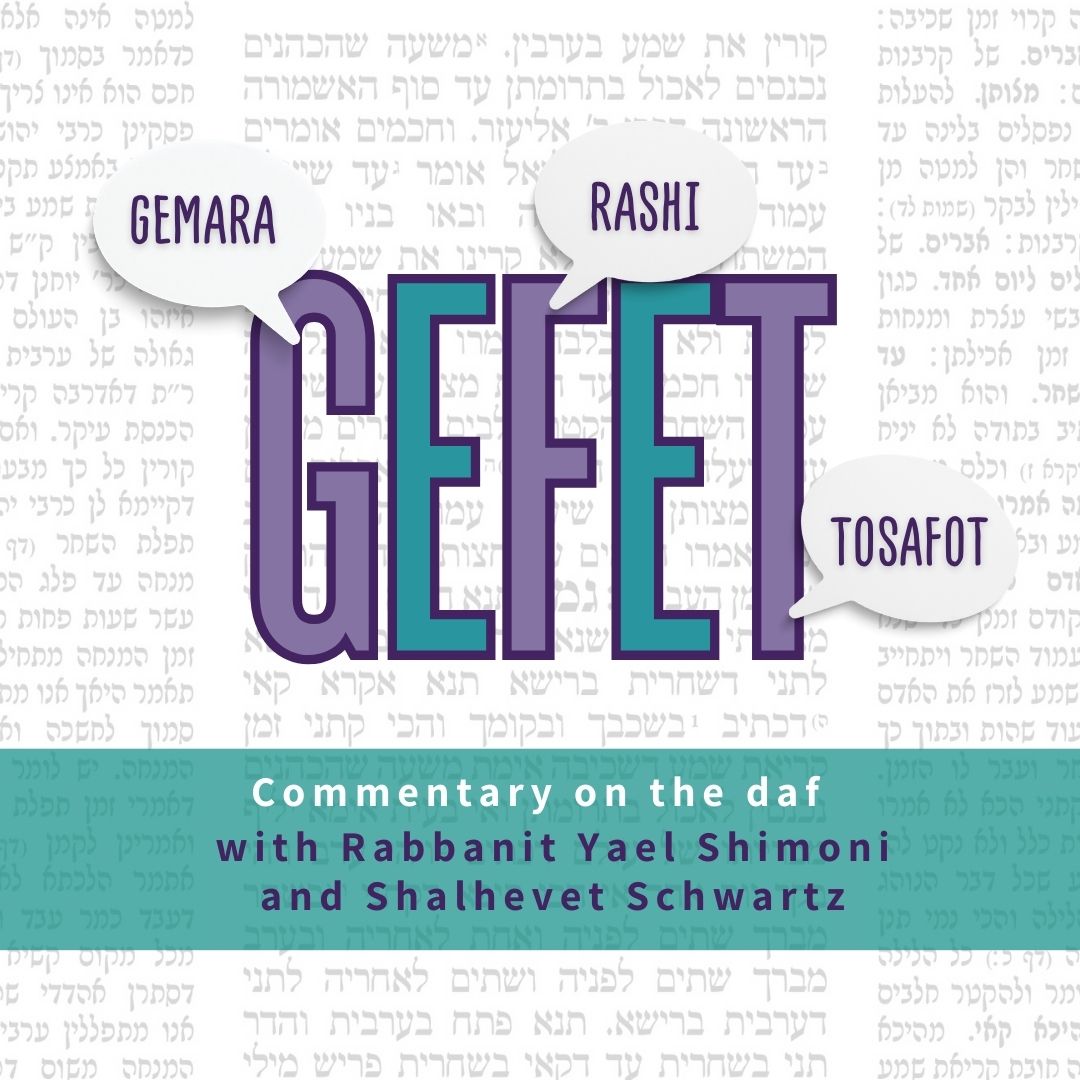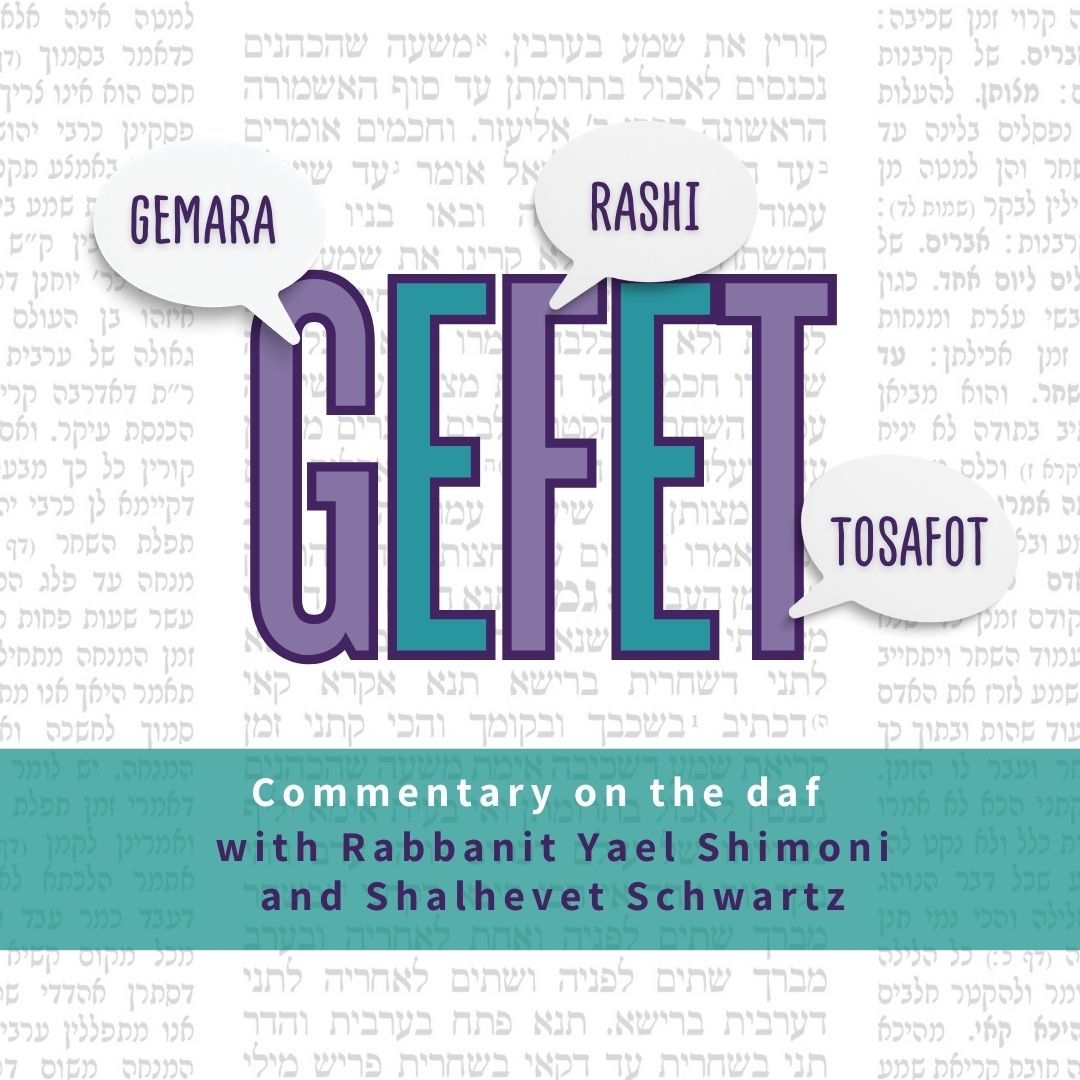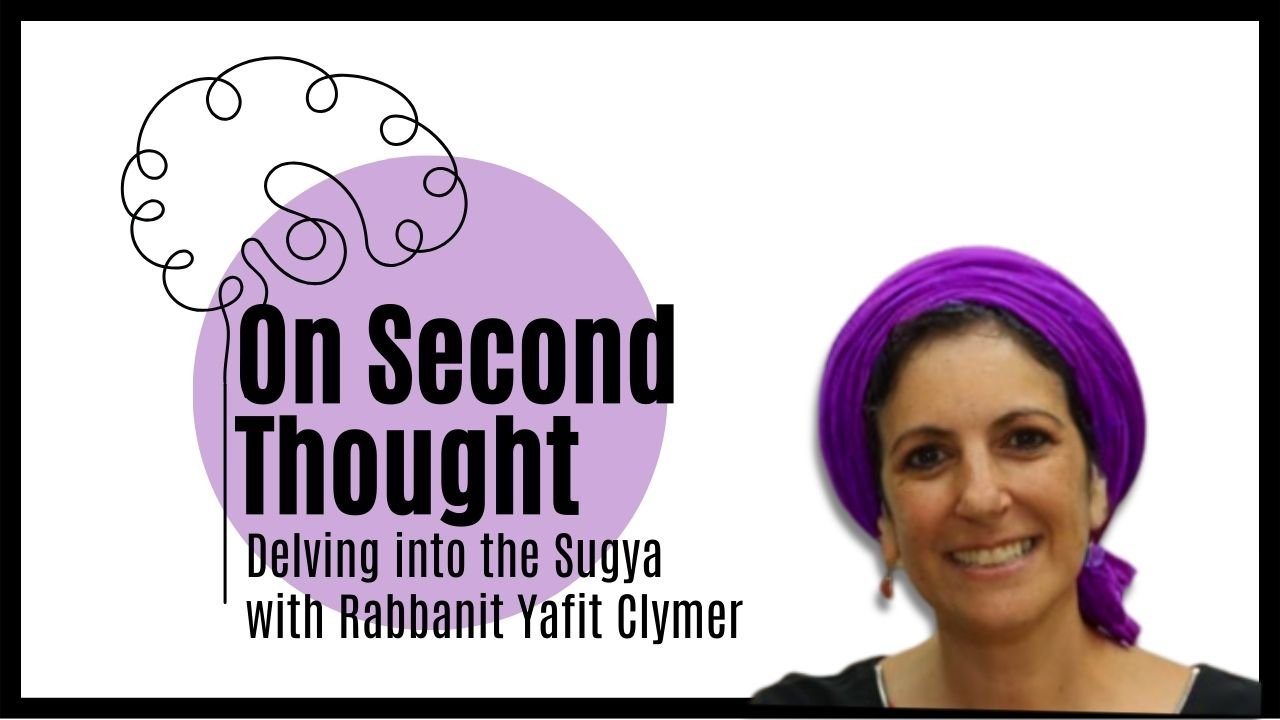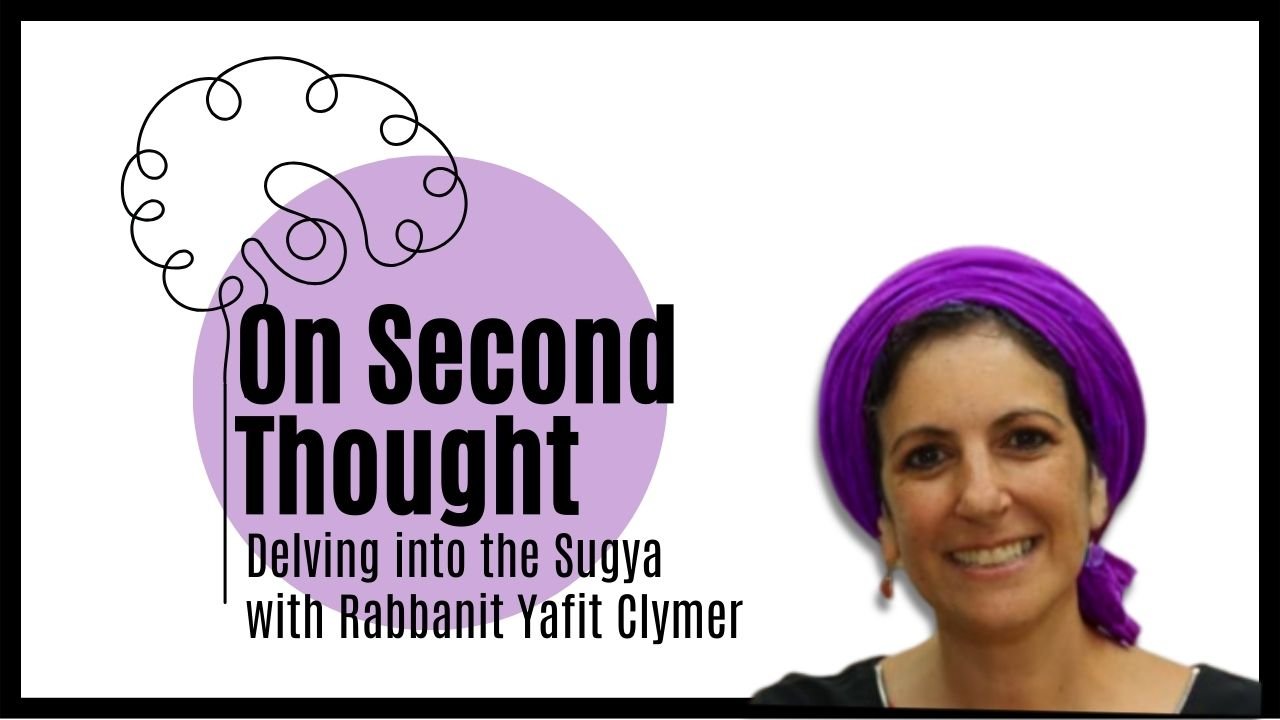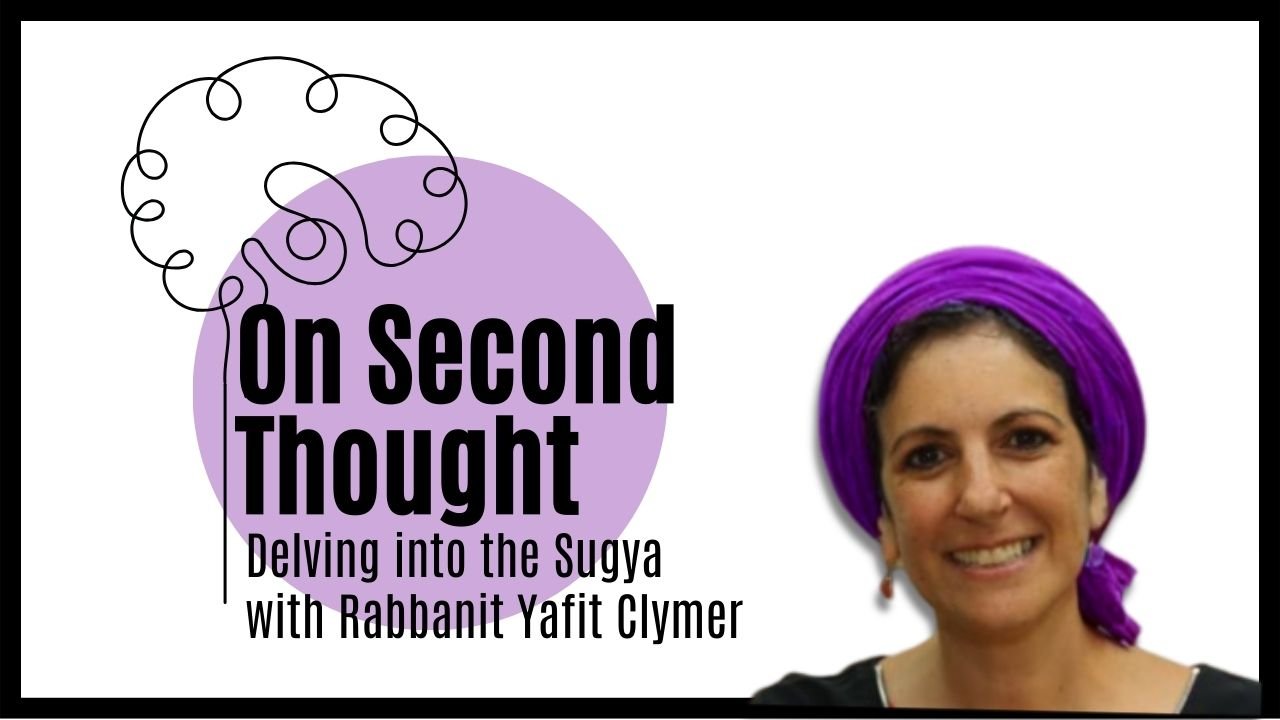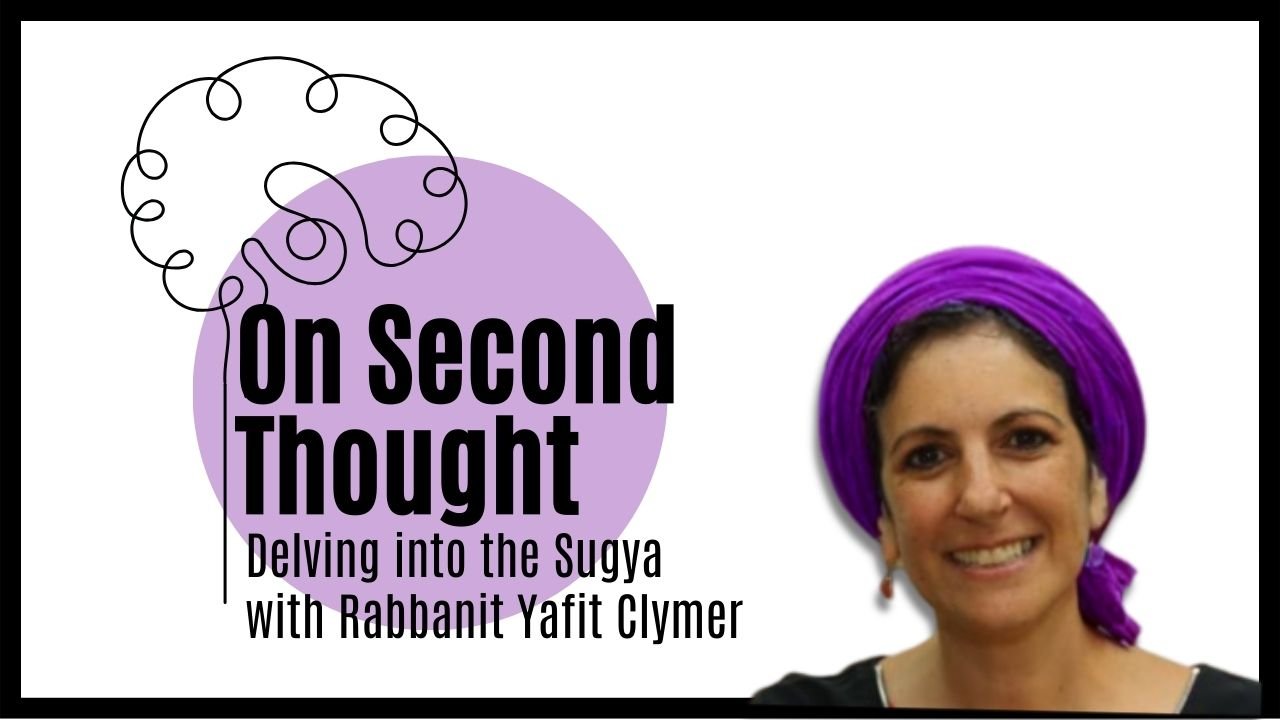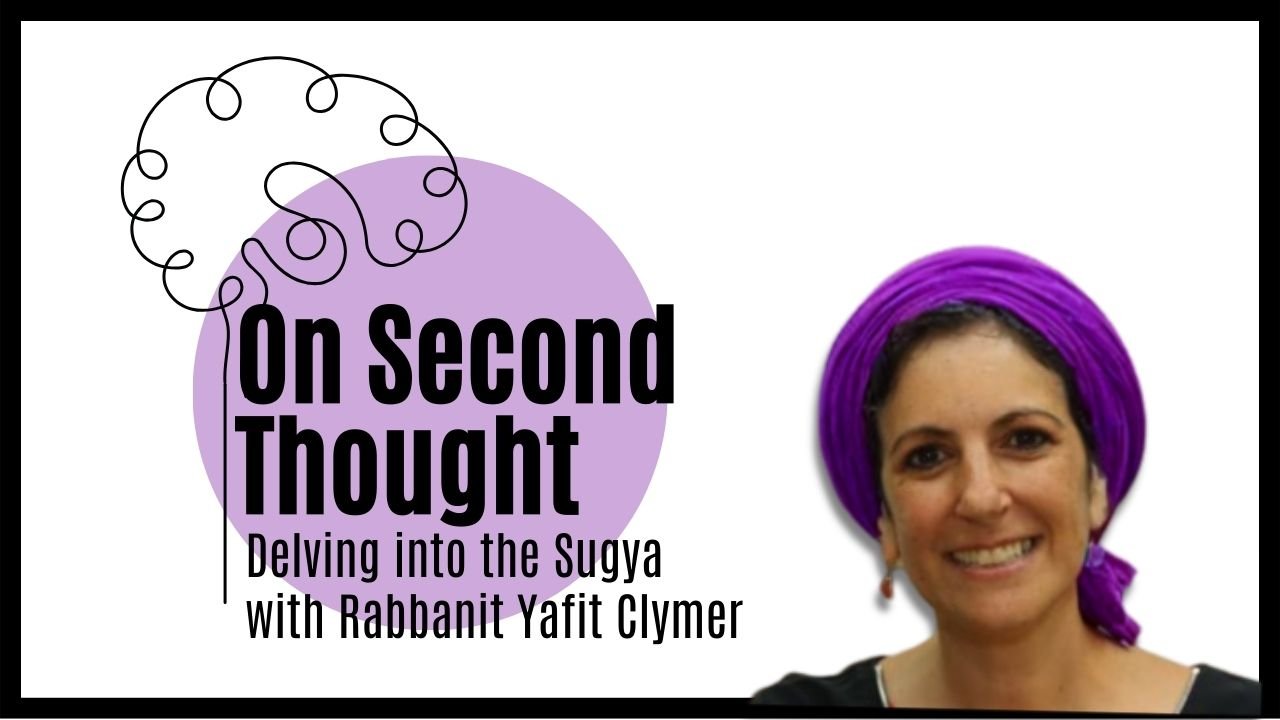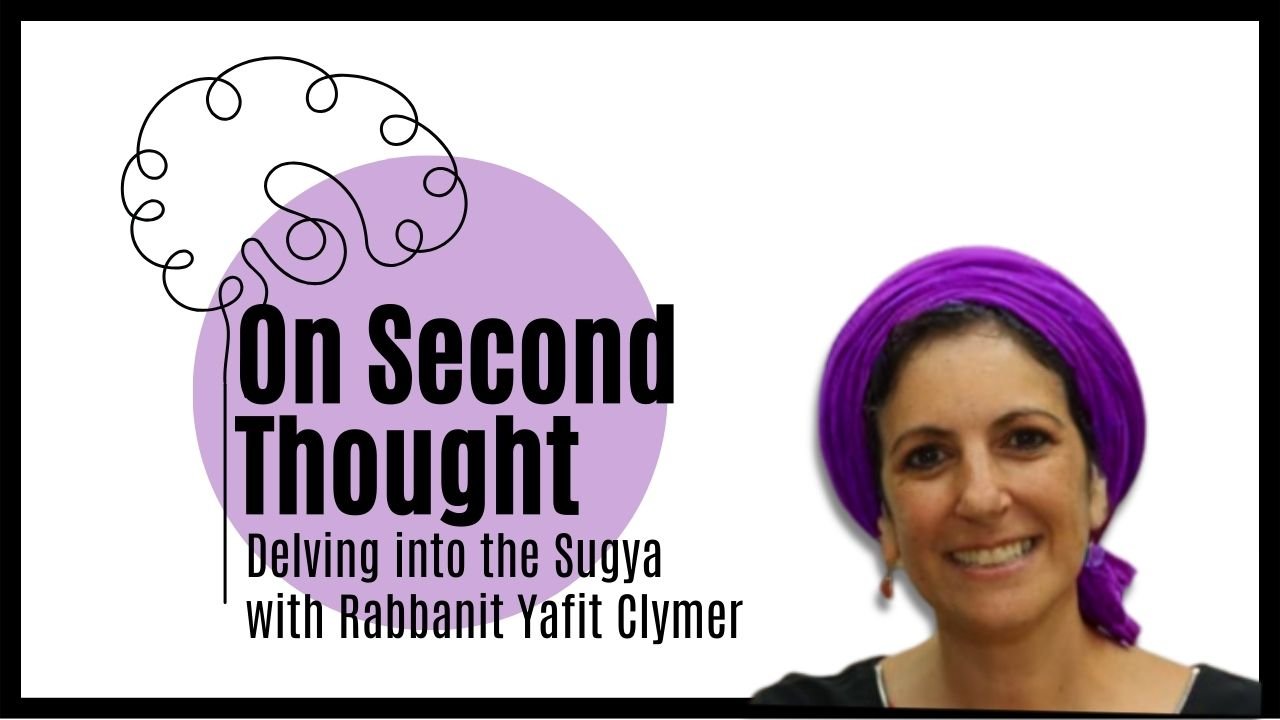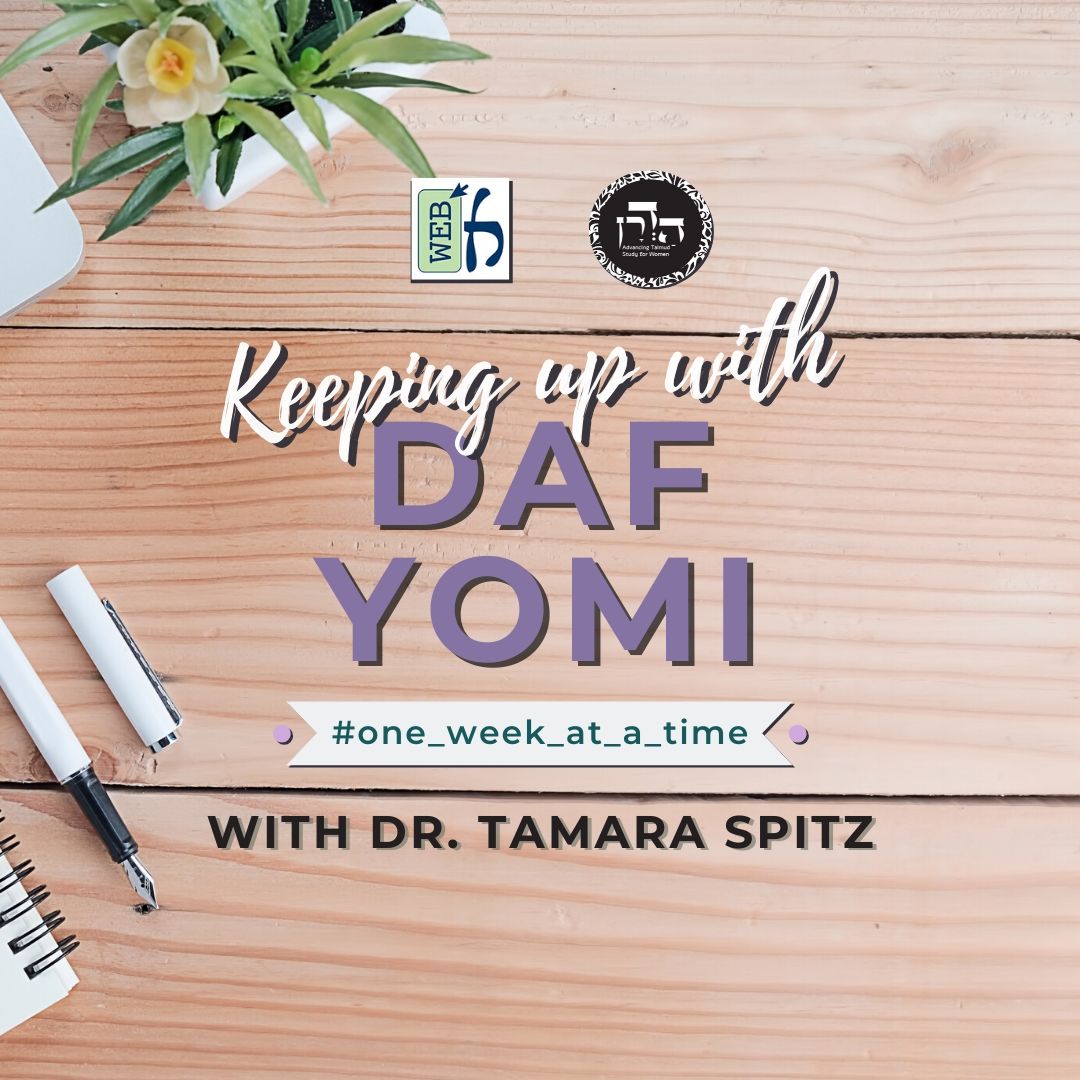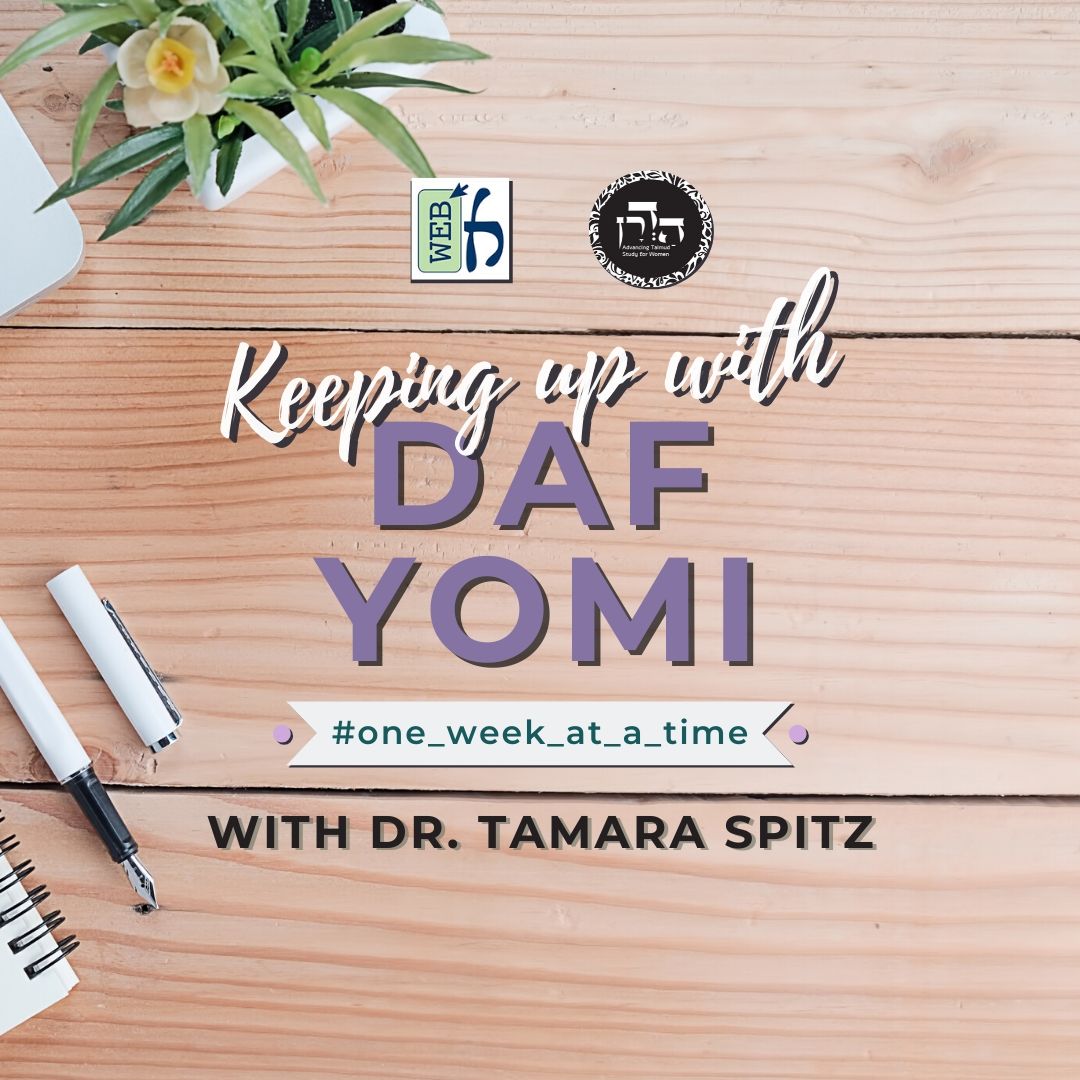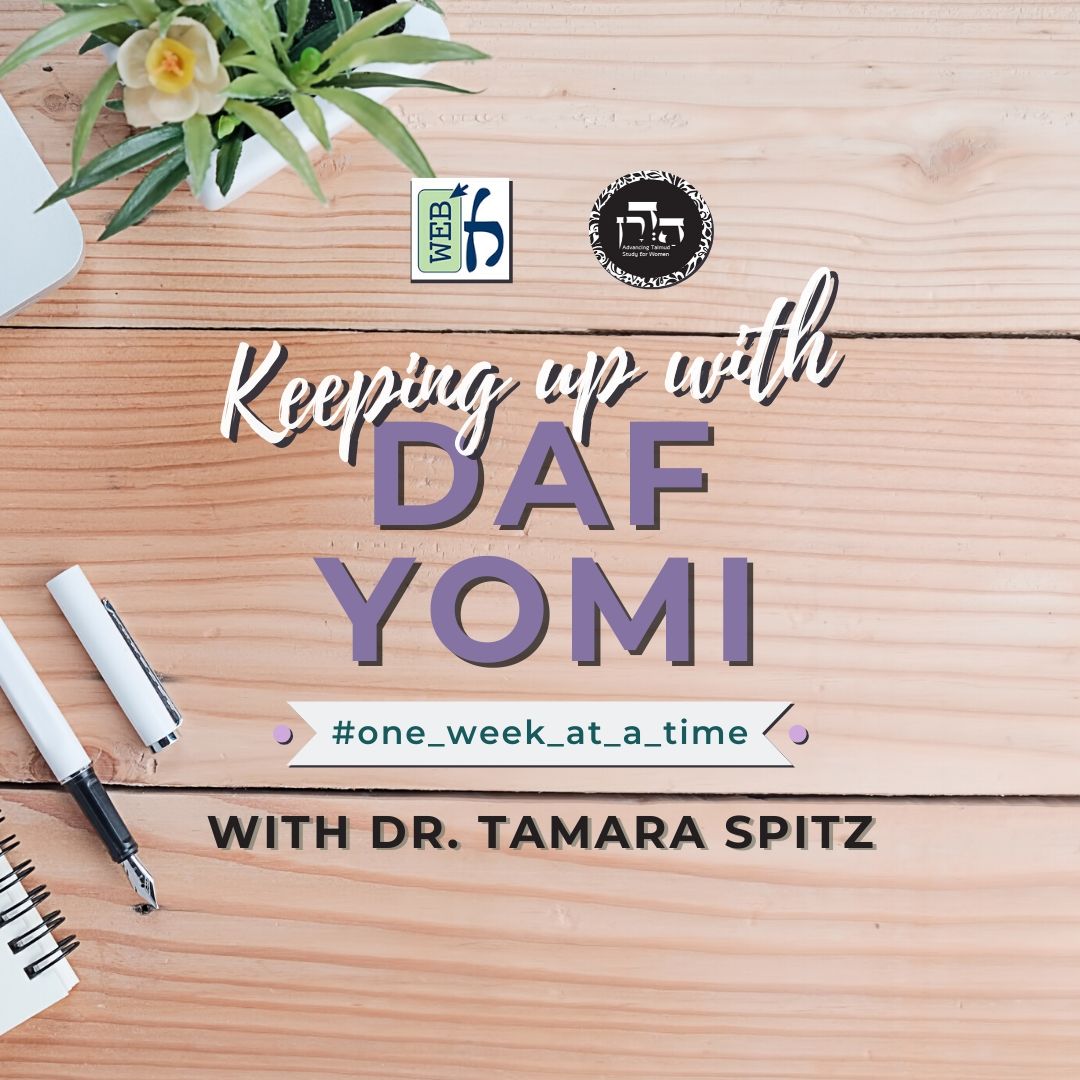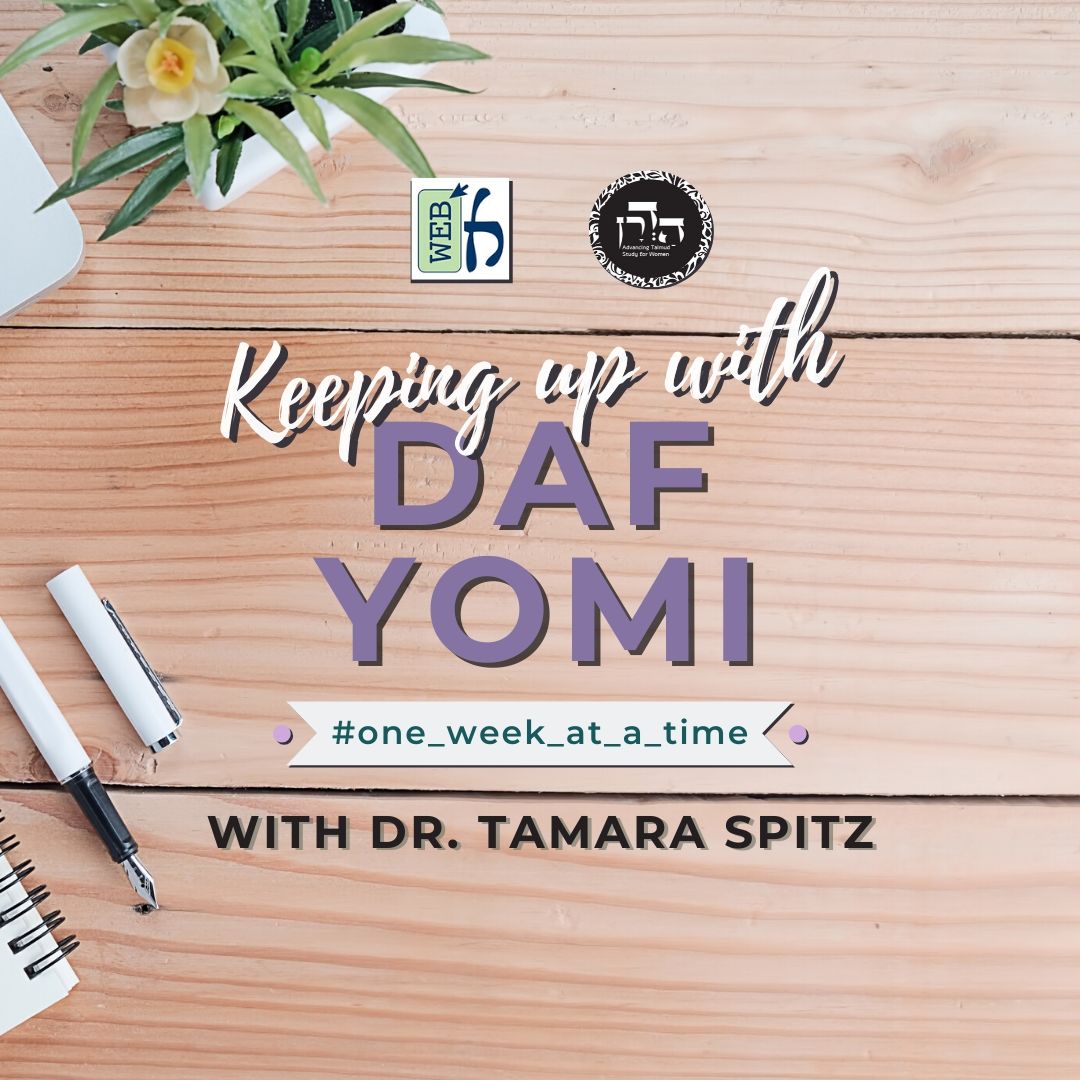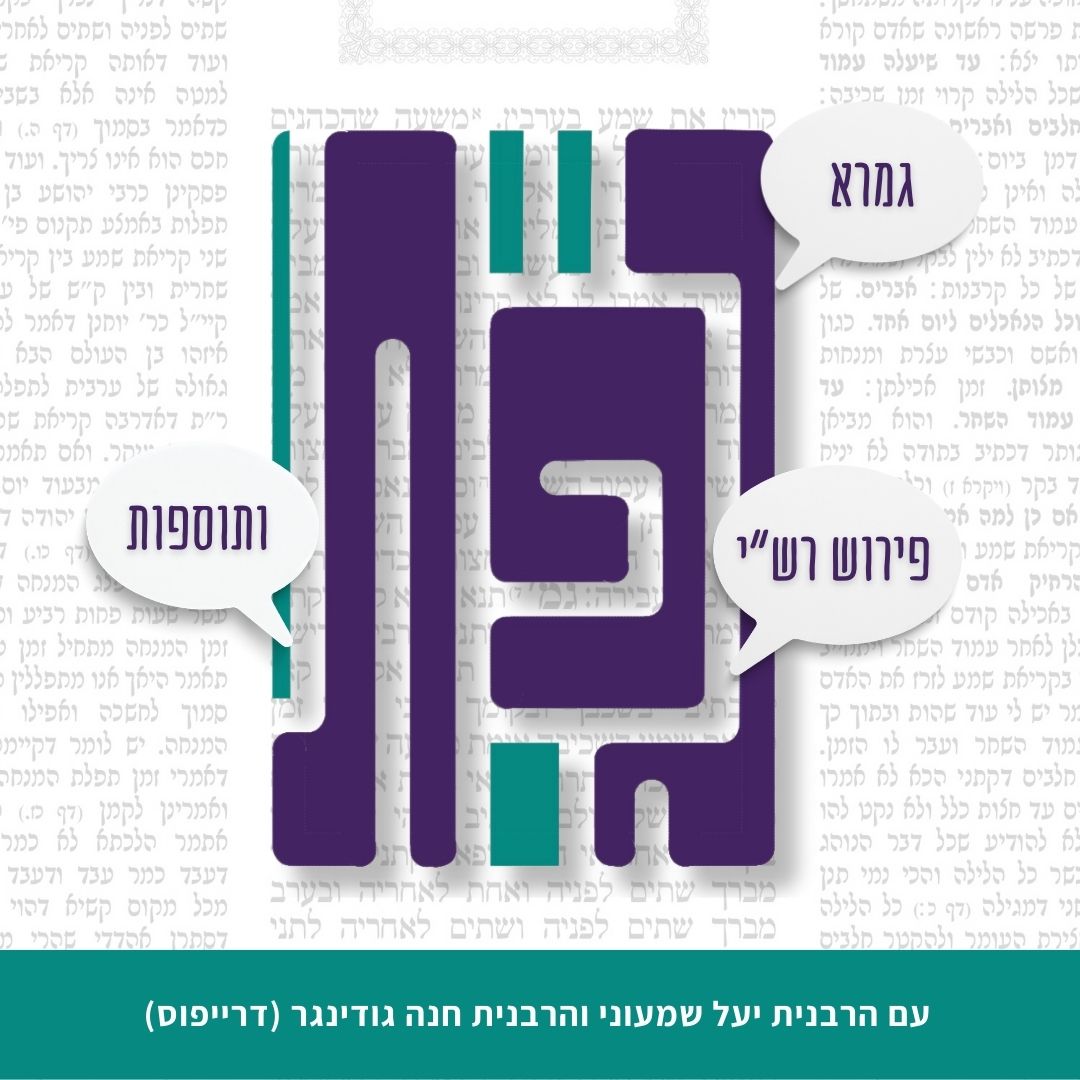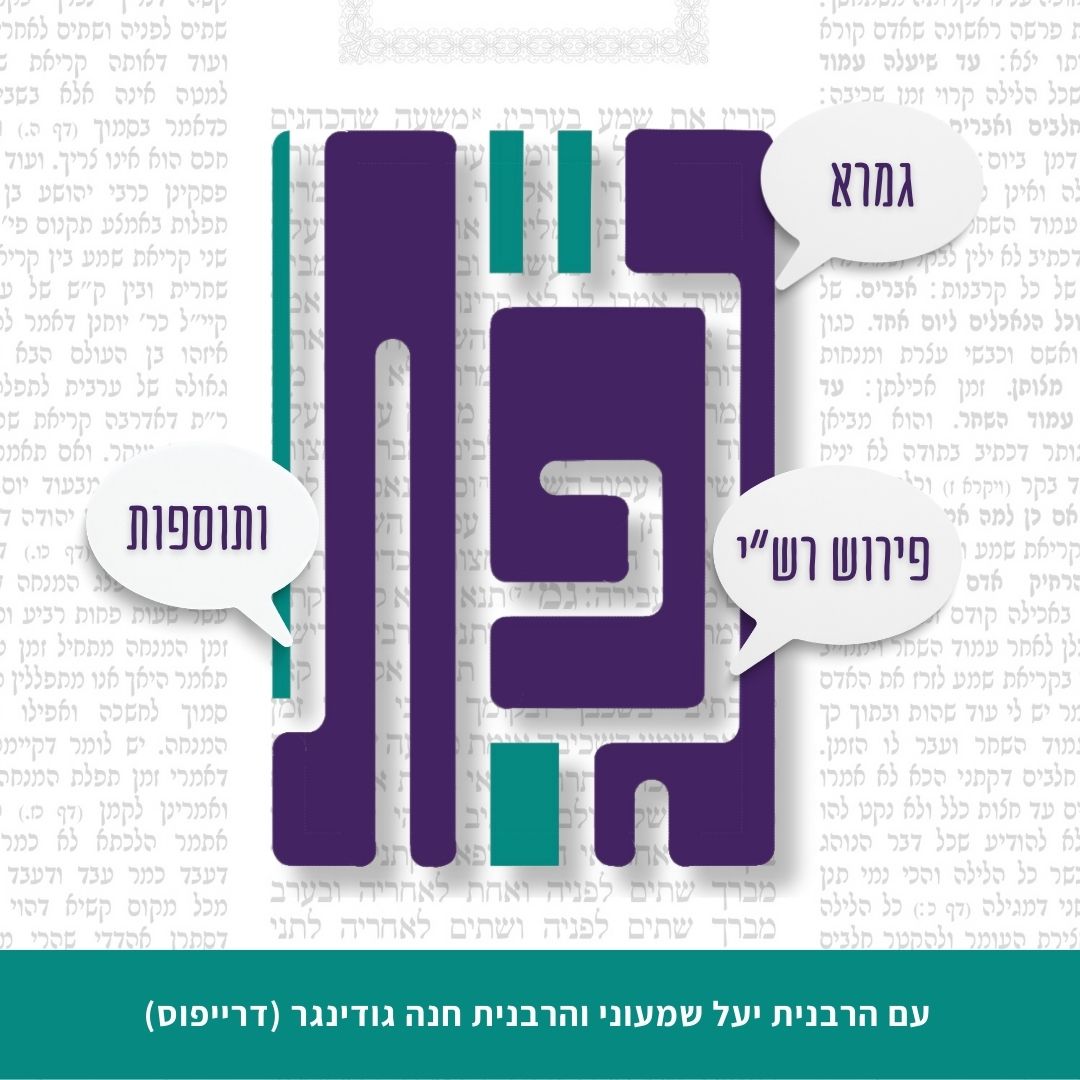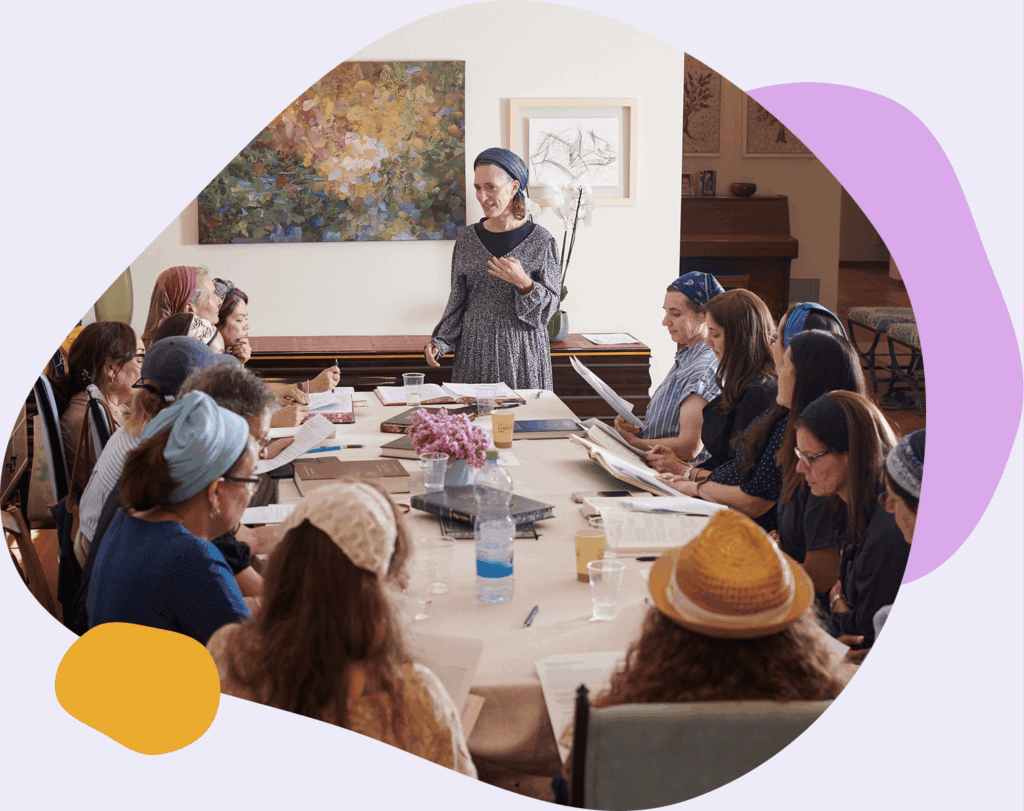
Hadran: Advancing Talmud Study for Women
Hadran supports Jewish women of all ages, backgrounds and skill levels with resources and inspiration to engage in Talmud study.
Avodah Zarah 75
Rabbanit Michelle Farber
09.01.2025 | ח׳ באלול תשפ״הStart Studying Talmud
Daf Yomi
Get ‘on the same page’ with Jews around the world on a daily basis.
Masechet
Select a section of the Talmud to suit your learning interests and schedule.
Beyond the Daf
Delve deep with weekly classes and podcasts from top women scholars.
Courses
Develop your Talmud study skills with self-paced online courses.
Resources
Talmud, Your Way
Experience Talmud with daily or weekly shiurim from top women scholars, each with a different focus and flavor. There’s something here for everyone.
Talmud, Your Way
Experience Talmud with daily or weekly shiurim from top women scholars, each with a different focus and flavor. There’s something here for everyone.
Daf Yomi
Avodah Zarah 75
Today’s daf is sponsored by Lisa Elon in honor of her steadfast chevruta, Rhondda May, “May G-d grant us many more years of great learning together. “
Today’s daf is sponsored by Rachel Alexander Levy in memory of Jack Schuster, father of my chevruta, Rabbi Jordi Schuster. May his memory be for a blessing.
Today’s daf is sponsored by Adam Dicker in honor of Carolyn Hochstadter Dicker on her birthday.
There is a debate between Rav and Shmuel regarding the kashering process known as niguv. In one version of the debate, Rav requires that ashes be used once during the process, while Shmuel requires them to be used twice. In another version, there is no actual disagreement—Rav simply omits the final step of rinsing with water, since its sole purpose is to remove the ashes. Shmuel, however, includes it as part of the process.
How are wicker nets in a winepress kashered? Rabbi Avahu derives from the laws of purifying wicker nets that they require niguv. If the nets are made of reeds, which are more absorbent, they must be left unused for twelve months—or, according to Rabban Shimon ben Gamliel, until the next wine-making season. What is the practical difference between these two opinions? Rabbi Yossi offers an alternative to waiting a year: pouring boiling water over them. Rabban Shimon ben Gamliel cites Rabbi Yossi, suggesting instead that the nets be placed under running water for an onah. What is an onah? Some define it as either a day or a night, while others say it means twelve hours. Rav Shmuel bar Yitzchak explains that both interpretations ultimately mean the same thing. How?
The strainer and baskets used in the winepress are kashered differently depending on the material they are made from, since the level of absorption varies.
If grape clusters are placed in the winepress and surrounded by the juice from the grapes, are they considered a single unit for the purposes of impurity? This has practical implications: if an am haaretz—someone who may not be trusted regarding purity laws—touches one cluster, does that render all the surrounding clusters impure?
If one purchases utensils from a non-Jew, how are they to be kashered? The method depends on how the utensil was used: if used with cold food, rinse with water; if used with hot water, perform hagala (boiling); and if exposed to direct fire, apply libun (burning with fire). A knife must be polished. All these utensils also require tevila—immersion in a mikveh. Two different phrases in Bamidbar 31:23, following the battle with Midian, are cited to derive the requirement for tevila. Why are both phrases needed? Rav Nachman explains that even new utensils purchased from a non-Jew require tevila, since kashered old utensils are considered equivalent to new ones. Borrowed utensils from a non-Jew do not require tevila, but a question arises regarding utensils given to a Jew as collateral.
Metal and glass utensils require tevila, but earthenware does not. If an earthenware vessel is coated with a lead glaze, should it be treated as earthenware or as metal?
If utensils were used without being kashered, is food prepared in them forbidden? The answer depends on when the vessel was last used and whether one holds that a substance imparting a bad flavor is permitted or prohibited.
Daf Yomi
Avodah Zarah 74
This week’s learning is sponsored by Carolyn Hochstadter, Adam Dicker, and family on the 17th yahrzeit of Fred Hochstadter, Ephraim ben Kayla v’Baruch this Monday, 8 Elul. “‘Dad’ was a holocaust survivor who was saved via the Kindertransport, came to Canada and met ‘Ma’ in Montreal. Together, they built a family, business, community, and legacy of support and love for Medinat Yisrael. We miss you and are managing to catch up on some of your reading material, including Menachem Elon’s Mishpat Ivri — to which Hadran’s Daf Yomi has given so much background and context. We continue to laugh at your jokes and follow your wise guidance. And also in honor of today’s pidyon haben of our first Sabra grandchild, Zecharia Ami – Zach. Saba and Savta would be proud.”
Today’s daf is sponsored by Rochel Cheifetz in commemoration of her husband’s, Aryeh Leib ben Yehuda, Lenny Cheifetz’s, 33rd yahrzeit. “You were taken much too soon. But I thank HKB”H for the time we were blessed with your smile, goodness, sense of humor, and love. Yehi zichro baruch.”
Today’s daf is sponsored by Emma Rinberg for a refuah shlemah for her son Joseph, Yosef Yitzchak Nisan Ben Nechama Leah Esther, who is having surgery today to repair a broken femur after a bike accident.
The Mishna lists various items that are forbidden to derive benefit from and remain prohibited even in the smallest amount when mixed with permitted substances. The Gemara asks and explains why certain items are not included in the Mishna’s list.
If yayin nesech falls into a pit, the entire quantity of wine becomes forbidden. However, Rabban Shimon ben Gamliel ruled that the mixture may be sold, provided the value of the yayin nesech is deducted from the sale price. There is a debate among the amoraim about whether we rule like Rabban Shimon ben Gamliel in all cases, or only in specific situations—such as when a barrel of yayin nesech is mixed with a barrel of permitted wine, as opposed to a smaller quantity of forbidden wine that is mixed into a jug or barrel of permitted wine.
To kasher a winepress that was used by or prepared by a non-Jew, the process depends on the material from which the winepress is made and whether it was lined with pitch.
Daf Yomi
Avodah Zarah 73
This is the daf for Shabbat. For Friday’s daf, please click here.
The Mishna discusses the laws of nullification regarding yayin nesech (wine used for idolatry) that becomes mixed with permitted wine. It distinguishes between wine mixed with wine (min b’minu—same substance), which is forbidden in any amount, and wine mixed with water (min b’she’eino mino—different substance), which is prohibited only if it imparts taste.
Rav Dimi quotes Rabbi Yochanan as saying that if one pours yayin nesech from a barrel into a pit of kosher wine, each drop is immediately nullified upon contact. The Gemara raises three challenges to Rav Dimi’s interpretation based on the Mishna, and resolves them by reinterpreting the cases in the Mishna. Rav Yitzchak bar Yosef offers a narrower understanding of Rabbi Yochanan’s ruling—limiting it to pouring from a jug into a barrel, but not from a barrel into a pit.
Ravin also transmits a halakha in Rabbi Yochanan’s name regarding a mixture that includes a forbidden item combined with both a similar and a different substance. In such a case, the forbidden item is nullified by the different substance (e.g., yayin nesech mixed with wine and water), while the similar substance is viewed as if it is not there. Rav Shmuel bar Yehuda also quotes Rabbi Yochanan, but there are two versions of his statement. In one version, he disagrees with Ravin and limits the ruling to cases where the different substance was present first. In the other version, his comment refers to the Mishna, and he actually agrees with Ravin.
A debate between Chizkiya and Rabbi Yochanan also concerns a case where a forbidden item is mixed with both a similar and a different substance. What is the underlying basis of their disagreement?
Rav and Shmuel dispute the position of Rabbi Yochanan and Reish Lakish regarding whether the distinction between mixtures of the same type and mixtures of different types applies universally to all prohibited items, or only to yayin nesech and tevel (untithed produce). The Gemara explains why the rabbis would have adopted a stricter approach with those two prohibitions.
The Mishna discusses the laws of nullification regarding yayin nesech (wine used for idolatry) that becomes mixed with permitted wine. It distinguishes between wine mixed with wine (min b’minu—same substance), which is forbidden in any amount, and wine mixed with water (min b’she’eino mino—different substance), which is prohibited only if it imparts taste.
Daf Yomi
Avodah Zarah 72
The resolution to the second difficulty against Rav Ashi’s position is rejected, and the Gemara concludes that pulling does affect acquisition for a non-Jew.
The Mishna on Avodah Zarah 71 stresses the issue of agreement on price as a precondition for acquisition. Some situations arose regarding this issue in selling property. At first, Rav Yosef and Abaye disagree about whether or not the same principle applies in a sale, as the Mishna only discussed it about yayin nesech. However, the Gemara concludes that Abaye is correct, that the same logic applies for both, based on a ruling of Rav Huna, which was based on a Mishna in Bava Batra 85b. However, in a different case, there is a further debate about whether this holds, albeit under more unique circumstances.
The Mishna discusses two cases. In the first case, a Jew pours wine through a funnel into the non-Jew’s jug. If there are some droplets of wine in the funnel, they are prohibited. If the Jew pours wine from a vessel into another vessel, the wine in the first vessel is permitted, while the wine in the second vessel is prohibited.
The Gemara first quotes a Mishna in Taharot 8:9 relating to the issue of nitzok, a stream of water, as regards impurity. If water that streams down becomes impure, i.e., is poured into an impure vessel, it does not affect the water at the top that has not entered the vessel. Rav Huna, however, ruled that the upper liquid would be forbidden in a parallel case of yayin nesech.
Beyond the Daf
The Laws of Theft: The Same for Jews and Gentiles? – Gefet
Daf Yomi
Get ‘on the same page’ with Jews around the world on a daily basis.
Avodah Zarah 75
Today’s daf is sponsored by Lisa Elon in honor of her steadfast chevruta, Rhondda May, “May G-d grant us many more years of great learning together. “
Today’s daf is sponsored by Rachel Alexander Levy in memory of Jack Schuster, father of my chevruta, Rabbi Jordi Schuster. May his memory be for a blessing.
Today’s daf is sponsored by Adam Dicker in honor of Carolyn Hochstadter Dicker on her birthday.
There is a debate between Rav and Shmuel regarding the kashering process known as niguv. In one version of the debate, Rav requires that ashes be used once during the process, while Shmuel requires them to be used twice. In another version, there is no actual disagreement—Rav simply omits the final step of rinsing with water, since its sole purpose is to remove the ashes. Shmuel, however, includes it as part of the process.
How are wicker nets in a winepress kashered? Rabbi Avahu derives from the laws of purifying wicker nets that they require niguv. If the nets are made of reeds, which are more absorbent, they must be left unused for twelve months—or, according to Rabban Shimon ben Gamliel, until the next wine-making season. What is the practical difference between these two opinions? Rabbi Yossi offers an alternative to waiting a year: pouring boiling water over them. Rabban Shimon ben Gamliel cites Rabbi Yossi, suggesting instead that the nets be placed under running water for an onah. What is an onah? Some define it as either a day or a night, while others say it means twelve hours. Rav Shmuel bar Yitzchak explains that both interpretations ultimately mean the same thing. How?
The strainer and baskets used in the winepress are kashered differently depending on the material they are made from, since the level of absorption varies.
If grape clusters are placed in the winepress and surrounded by the juice from the grapes, are they considered a single unit for the purposes of impurity? This has practical implications: if an am haaretz—someone who may not be trusted regarding purity laws—touches one cluster, does that render all the surrounding clusters impure?
If one purchases utensils from a non-Jew, how are they to be kashered? The method depends on how the utensil was used: if used with cold food, rinse with water; if used with hot water, perform hagala (boiling); and if exposed to direct fire, apply libun (burning with fire). A knife must be polished. All these utensils also require tevila—immersion in a mikveh. Two different phrases in Bamidbar 31:23, following the battle with Midian, are cited to derive the requirement for tevila. Why are both phrases needed? Rav Nachman explains that even new utensils purchased from a non-Jew require tevila, since kashered old utensils are considered equivalent to new ones. Borrowed utensils from a non-Jew do not require tevila, but a question arises regarding utensils given to a Jew as collateral.
Metal and glass utensils require tevila, but earthenware does not. If an earthenware vessel is coated with a lead glaze, should it be treated as earthenware or as metal?
If utensils were used without being kashered, is food prepared in them forbidden? The answer depends on when the vessel was last used and whether one holds that a substance imparting a bad flavor is permitted or prohibited.
Avodah Zarah 74
This week’s learning is sponsored by Carolyn Hochstadter, Adam Dicker, and family on the 17th yahrzeit of Fred Hochstadter, Ephraim ben Kayla v’Baruch this Monday, 8 Elul. “‘Dad’ was a holocaust survivor who was saved via the Kindertransport, came to Canada and met ‘Ma’ in Montreal. Together, they built a family, business, community, and legacy of support and love for Medinat Yisrael. We miss you and are managing to catch up on some of your reading material, including Menachem Elon’s Mishpat Ivri — to which Hadran’s Daf Yomi has given so much background and context. We continue to laugh at your jokes and follow your wise guidance. And also in honor of today’s pidyon haben of our first Sabra grandchild, Zecharia Ami – Zach. Saba and Savta would be proud.”
Today’s daf is sponsored by Rochel Cheifetz in commemoration of her husband’s, Aryeh Leib ben Yehuda, Lenny Cheifetz’s, 33rd yahrzeit. “You were taken much too soon. But I thank HKB”H for the time we were blessed with your smile, goodness, sense of humor, and love. Yehi zichro baruch.”
Today’s daf is sponsored by Emma Rinberg for a refuah shlemah for her son Joseph, Yosef Yitzchak Nisan Ben Nechama Leah Esther, who is having surgery today to repair a broken femur after a bike accident.
The Mishna lists various items that are forbidden to derive benefit from and remain prohibited even in the smallest amount when mixed with permitted substances. The Gemara asks and explains why certain items are not included in the Mishna’s list.
If yayin nesech falls into a pit, the entire quantity of wine becomes forbidden. However, Rabban Shimon ben Gamliel ruled that the mixture may be sold, provided the value of the yayin nesech is deducted from the sale price. There is a debate among the amoraim about whether we rule like Rabban Shimon ben Gamliel in all cases, or only in specific situations—such as when a barrel of yayin nesech is mixed with a barrel of permitted wine, as opposed to a smaller quantity of forbidden wine that is mixed into a jug or barrel of permitted wine.
To kasher a winepress that was used by or prepared by a non-Jew, the process depends on the material from which the winepress is made and whether it was lined with pitch.
Avodah Zarah 73
This is the daf for Shabbat. For Friday’s daf, please click here.
The Mishna discusses the laws of nullification regarding yayin nesech (wine used for idolatry) that becomes mixed with permitted wine. It distinguishes between wine mixed with wine (min b’minu—same substance), which is forbidden in any amount, and wine mixed with water (min b’she’eino mino—different substance), which is prohibited only if it imparts taste.
Rav Dimi quotes Rabbi Yochanan as saying that if one pours yayin nesech from a barrel into a pit of kosher wine, each drop is immediately nullified upon contact. The Gemara raises three challenges to Rav Dimi’s interpretation based on the Mishna, and resolves them by reinterpreting the cases in the Mishna. Rav Yitzchak bar Yosef offers a narrower understanding of Rabbi Yochanan’s ruling—limiting it to pouring from a jug into a barrel, but not from a barrel into a pit.
Ravin also transmits a halakha in Rabbi Yochanan’s name regarding a mixture that includes a forbidden item combined with both a similar and a different substance. In such a case, the forbidden item is nullified by the different substance (e.g., yayin nesech mixed with wine and water), while the similar substance is viewed as if it is not there. Rav Shmuel bar Yehuda also quotes Rabbi Yochanan, but there are two versions of his statement. In one version, he disagrees with Ravin and limits the ruling to cases where the different substance was present first. In the other version, his comment refers to the Mishna, and he actually agrees with Ravin.
A debate between Chizkiya and Rabbi Yochanan also concerns a case where a forbidden item is mixed with both a similar and a different substance. What is the underlying basis of their disagreement?
Rav and Shmuel dispute the position of Rabbi Yochanan and Reish Lakish regarding whether the distinction between mixtures of the same type and mixtures of different types applies universally to all prohibited items, or only to yayin nesech and tevel (untithed produce). The Gemara explains why the rabbis would have adopted a stricter approach with those two prohibitions.
The Mishna discusses the laws of nullification regarding yayin nesech (wine used for idolatry) that becomes mixed with permitted wine. It distinguishes between wine mixed with wine (min b’minu—same substance), which is forbidden in any amount, and wine mixed with water (min b’she’eino mino—different substance), which is prohibited only if it imparts taste.
Avodah Zarah 72
The resolution to the second difficulty against Rav Ashi’s position is rejected, and the Gemara concludes that pulling does affect acquisition for a non-Jew.
The Mishna on Avodah Zarah 71 stresses the issue of agreement on price as a precondition for acquisition. Some situations arose regarding this issue in selling property. At first, Rav Yosef and Abaye disagree about whether or not the same principle applies in a sale, as the Mishna only discussed it about yayin nesech. However, the Gemara concludes that Abaye is correct, that the same logic applies for both, based on a ruling of Rav Huna, which was based on a Mishna in Bava Batra 85b. However, in a different case, there is a further debate about whether this holds, albeit under more unique circumstances.
The Mishna discusses two cases. In the first case, a Jew pours wine through a funnel into the non-Jew’s jug. If there are some droplets of wine in the funnel, they are prohibited. If the Jew pours wine from a vessel into another vessel, the wine in the first vessel is permitted, while the wine in the second vessel is prohibited.
The Gemara first quotes a Mishna in Taharot 8:9 relating to the issue of nitzok, a stream of water, as regards impurity. If water that streams down becomes impure, i.e., is poured into an impure vessel, it does not affect the water at the top that has not entered the vessel. Rav Huna, however, ruled that the upper liquid would be forbidden in a parallel case of yayin nesech.
Avodah Zarah 71
Today’s daf is sponsored by David and Mitzi Geffen in loving memory of Mitzi’s brother Dr. Dennis Lock on his yahrtzeit. He was a loving husband, father, uncle, and grandfather, a devoted physician; and had a love of learning Talmud. He is sorely missed.
Today’s daf is sponsored by Rachel Bayefsky and Michael Francus in honor of their baby daughter Avital Temima, born 12 Av/August 6. “She is already listening to Rabbanit Farber’s podcast during feedings! May she grow up to love learning.”
If a fleet enters a city during peacetime, any open wine barrels are deemed forbidden due to the concern that the soldiers may have drunk from them. In contrast, during wartime, it is assumed they would not have had time to drink, and therefore the wine is not considered to have been used for libations. However, a conflicting source suggests that even in times of war, the women of the city may have been raped. Rav Meri resolves this contradiction by distinguishing between the concern of rape and the concern of wine consumption.
The Mishna discusses how a Jewish laborer who is paid in wine by a non-Jew can request monetary compensation in a manner that avoids the prohibition of benefiting from yayin nesech (wine used for idolatrous purposes). It raises the question: can a non-Jew pay a wine tax to the king on behalf of a Jew, or would that be prohibited due to the Jew deriving benefit from yayin nesech?
The Mishna further rules that when a Jew sells wine to a non-Jew, the price must be agreed upon before the wine is poured into the non-Jew’s container. If not, the wine is considered to be in the non-Jew’s possession before the sale is finalized, and the Jew would be benefiting from yayin nesech.
Ameimar and Rav Ashi debate whether the act of pulling an item (meshicha) constitutes a valid acquisition (kinyan) for non-Jews. Rav Ashi, who holds that it does not, cites Rav’s instruction to wine sellers to ensure they receive payment before measuring out the wine. However, the Gemara offers an alternative explanation for Rav’s directive.
A challenge is raised against Ameimar’s view, and two difficulties are posed against Rav Ashi—one stemming from our Mishna. Ultimately, all objections are resolved.
Avodah Zarah 70
Rava ruled that if a Jew is with a non-Jewish prostitute and there is wine present, one can assume that the Jew ensured the prostitute did not come into contact with the wine, and therefore it is permitted. Although he may not be able to control his sexual desires, he is not presumed to be lax in the laws of yayin nesech (forbidden wine). However, in the reverse case—where a Jewish prostitute is with a non-Jew—since the non-Jew holds the dominant position in the relationship, we assume she has no way to prevent him from touching the wine, and thus it is forbidden.
There are nine different cases in which a Jew’s wine was left with a non-Jew, and Rava issued rulings on whether the wine was permitted or forbidden in each instance. In many of these cases, he permitted the wine based on his assessment that the non-Jew would likely not have touched it, due to the possibility of being caught by the owner or another Jew. In other cases, there was uncertainty about whether the non-Jew had even come into contact with the wine, or whether the individuals present were Jews or non-Jews.
Two additional cases were brought before other rabbis. In the second case, Abaye introduces a comparison to the laws of impurity, and the Gemara addresses this comparison. It notes that the rabbis were stricter regarding impurity laws than they were with wine, citing a debate between Rav and Rabbi Yochanan to support this point. Three challenges are raised against the positions of Rav and Rabbi Yochanan—two against Rav and one against Rabbi Yochanan—and each is resolved.
Beyond the Daf
Explore relevant and thought-provoking topics that arise from the daf with fresh weekly Beyond the Daf content.
A Daf Of Their Own – Introduction to Masechet Horayot
The Laws of Theft: The Same for Jews and Gentiles? – Gefet
Din & Daf: עולם כמנהגו נוהג -What Does This Mean Theologically
Din & Daf
Conceptual Analysis of Halakha Through Case Study with Dr. Elana Stein Hain In each session, we will delve into conceptual explorations of halakhic phenomena.
Din & Daf: Inherited Oaths- The Legacy of Har Sinai (P. 1) מושבע ועומד מהר סיני
Selling Chametz on Pesach: What is the Halakhic Logic? – Din & Daf
A Daf of Their Own
Thought-provoking Talmudic discussions in a friendly, accessible style with Rabbanit Shira Marili Mirvis and Rabbanit Hamutal Shoval
A Daf Of Their Own – Introduction to Masechet Horayot
A Daf Of Their Own – Heartfelt Intentions vs. Spoken Vows
A Daf Of Their Own – Plotting Witnesses: Understanding Eidim Zomemim
Flashback
Flashback: a look into the reality of the Talmud. What was the time of the Talmud really like? How were the experiences different?
Gefet
Gemara, Perushim and Tosfot An in-depth (Iyun) Gemara shiur with Rabbanit Yael Shimoni and Shalhevet Schwartz Disclaimers: you do not have to be a daf learner to study Gefet. The texts are in Hebrew, the class teaching is in English. *In collaboration with Yeshivat Drisha
The Laws of Theft: The Same for Jews and Gentiles? – Gefet
When ‘I Didn’t Know’ Isn’t Enough: Torah Law vs. Natural Morality – Gefet
On Second Thought
On Second Thought: Delving Into the Sugya with Rabbanit Yafit Clymer
The Death Penalty in the Mishnah and Talmudic Era – On Second Thought
The Death Penalty in the Second Temple Period – On Second Thought
The Death Penalty in the Tanakh – On Second Thought
True to Ourselves, True to Others – On Second Thought
Damage by Sight, Privacy and a Prophet with a Closed Eye – On Second Thought
Daf Yomi: One Week at a Time
This shiur will allow you to connect to the worldwide phenomenon of Daf Yomi study, whether you learn the daf each day or just want to gain an overview of the entire Gemara.
Avodah Zarah Daf 36-42 – Daf Yomi: One Week at a Time
Avodah Zarah Daf 29-35 – Daf Yomi: One Week at a Time
Avodah Zarah Daf 22-28 – Daf Yomi: One Week at a Time
Avodah Zarah Daf 15-21 – Daf Yomi: One Week at a Time
Sanhedrin – 93-99 – Daf Yomi: One Week at a Time
Avodah Zarah Daf 8-14 – Daf Yomi: One Week at a Time
Talking Talmud
A conversation on the daf yomi with Anne Gordon and Yardaena Osband
Makkot 15: When a Positive Commandment Corrects a Violation
Makkot 22: Not 40 Lashes, But 39 – And More Difficult Details
Beyond the Daf (HE)
Explore weekly shiurim in Hebrew covering the most thought-provoking topics that arise from the daf.
Suggested for you
Your history
Courses
Take a Course
Develop your Talmud study skills with free, self-paced online courses by experienced Gemara teachers. All courses are designed to be relevant for beginners, as well as more advanced learners.
Masechtot
Learn a Masechet
Take a personalized, self-paced trip through Talmud study by choosing a masechet (tractate) that matches your interests and schedule.
Support Women’s Talmud Study
Your donation to Hadran enables us to create more resources and to reach and inspire more women all over the world.
The Hadran Learners’ Tapestry
Meet the diverse women learning Gemara with Hadran.
Read their stories and add your own.




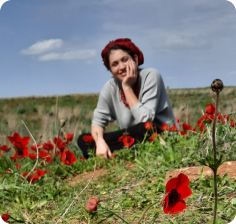

Register your free learner account now
With your free Hadran account, you can keep track of your learning options, choices and progress.
Progress tracker
Keep track of where you are in courses and masechtot.
Content updates
Follow the teachers you like. Get notified when they release new content.
Learning reminders
Receive reminders to help you keep up with your learning goals.
Account settings
Update your user and contact information.




